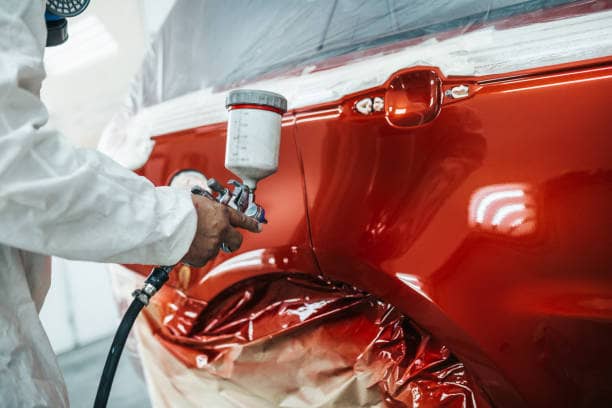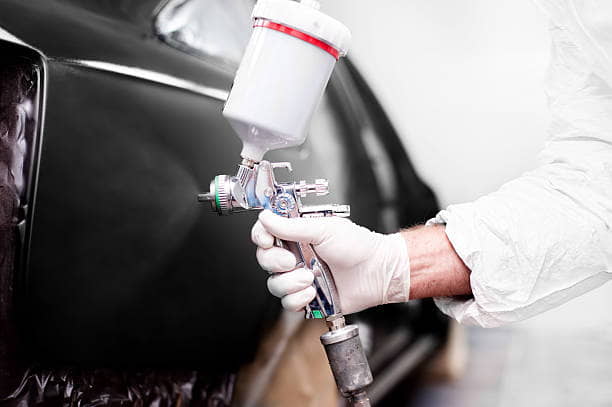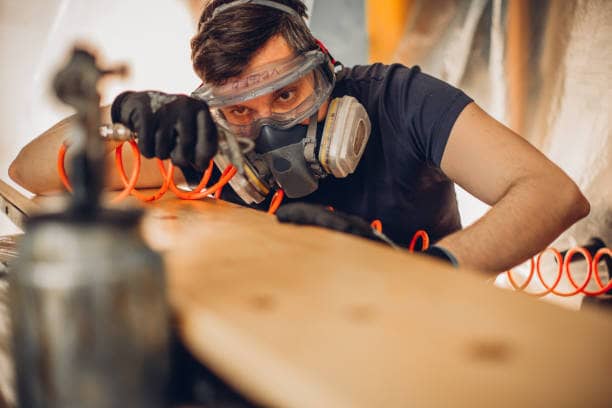Choosing a suitable air compressor will make your painting tasks easier and take your painting jobs to the next level.
Compressors come in many sizes. Some feature small tanks and lower power, ideal for nailing jobs.
Medium-sized compressors will work well for painting cars, furniture, cabinets, and craft paint in your garage.
On the other hand, you may need to pay more for bigger-sized compressors for a workshop, where continuous airflow to the spray gun is required.
It sounds complicated, right? So what size air compressor for painting?
Let’s scroll down to read more information!
What Size Air Compressor for Painting?
It depends on many factors. Compressor criteria may vary depending on the size of your operation and the kinds of auto paint you will need to complete.
You will need based on the jobs you focus on, such as painting furniture, painting a car, airbrush painting, or prefer a new bike look.
Most painters use an HVLP spray gun to get shiny factory-like finishing.
When picking a compressor to paint a car, which is your daily task in your garage, we recommend considering one of the 60-gallon compressors out there, which come with one 5HP motor and can produce at least 10 CFM.
For hobbyist painters who are involved in painting in their home garage over the weekend, a model created between 6 and 10 CFM will fit their criteria.
We recommend opting for one of the compressors with a 3HP motor, whose CFM rating is above 6.
Read more: How To Set Up An Air Compressor In A Residential Garage?
Factors To Consider When Choosing An Air Compressor
Pressure
Spray guns come in mainly two types using compressed air: High volume low pressure (HVLP) and low volume low pressure (LVLP) guns.
As their name suggests, the pressure requirement is not relatively high. Both gun types need low pressure to run correctly.
It is not the most critical factor. You need to focus more on the second factor.
CFM Rating
CFM refers to the air volume delivered by a compressor for each minute.
CFM does not involve the force of the air. Instead, it is the air quantity that a compressor can deliver at a specific pressure.
The CFM is one of the essential factors you must carefully consider when buying a compressor for your spray painting business or project.
Let’s start by checking the CFM requirement of your chosen gun, which will be used with your air compressor.
After determining the CFM requirement of your gun, ensure that your selected air compressor produces more CFM than this gun.
Avoid investing in one of the compressors that offer the same CFM as the gun. Always opt for the one that produces more of the CFM than your gun.
Any mistake here will cause the gun not to work or to work ineffectively. Hence, ensure you give this serious consideration.
Once you have met the CFM requirement, it is time to jump on the third aspect, which also significantly affects your paint job.
Read more: How To Increase CFM On Air Compressor?
Tank Size
Unlike other pneumatic tools, such as nailers that use air intermittently to shoot nails, a paint sprayer needs a continuous compressed air flow from an air compressor.
So, they use more air at the same time. This is why you can use a 6-gallon compressor for a nailer, but it doesn’t work well for a paint sprayer.
A paint sprayer requires a compressor with one large tank, ideally at least 50 gallons, to work well with the gun.
How Can I Spray Paint With a Proper Compressor?
Gather the Necessary Devices and Tools
- Safety equipment: A mask or respirator, gloves, and goggles.
- A proper compressor for your chosen spray gun
- Hose.
- Spray gun accessories: regulator, filter, quick disconnect fittings (optional, depending on your requirements).
Step By Step Guide
Step 1: Apply all safety gear before starting the project.
Step 2: Ensure you get one of the suitable compressors that deliver adequate CFM.
Step 3: Connect your spray gun to the compressor via a hose and other attachments.
Step 4: Mix your primer/paint and solvent to the correct ratios.
Step 5: Test the pressure paint sprayer pattern on cardboard to check if your spray delivers a consistent paint flow.
Step 6: It is possible to adjust the spray pattern on most HVLP spray guns through a knob on their side.
Step 7: Apply a coat of paint to the surface evenly, applying a second coat if you want after 12 to 24 (once the first coat is completely dry).
FAQs
How much Pressure does an HVLP Gun Need?
The HVLP spray gun operates around 10 PSI in most cases.
You should check with the manufacturer to ensure your compressor matches with tag spray gun in terms of PSI and CFMs.
Some LVLP and HVLP spray guns chew up air quite well, like the DeVilbiss line of sprayers which requires at least 12 to 13 CFMs to operate.
The same goes for the Iwata LVLP line of sprayers, which needs more PSI and CFMs than LVLP guns.
How Much CFM Should I Have to Paint My Car?
Spray guns typically work well between 80 and 100 CFM.
It means you should go with one of the compressors that feature a CFM rating from 4 to 19 for the best results.
How Many Gallons Do I Need?
Most experts recommend you pick something lower than 50 gallons to generate enough CFM for the spray gun.
Compressors that can operate one car spray gun without problem may not be enough for you to continuously utilize other kinds of tools.
For instance, brad nailers utilize a lot of air. So one of the smaller compressors cannot give you more than several nails before you must stop to wait for your compressor to catch up.
So if you have the budget, we recommend purchasing a larger tank. That way, you will have continuous air.
What Does 10 PSI to the Cap Mean?
It means that a spray gun needs not less than 10 PSI to be delivered to the nozzle or spray tip of the paint sprayer to atomize (spray) the paint properly.
It cannot spray paint if your spray gun receives less than 10 PSI.
What Is HVLP?
How much pressure does an HVLP gun need?
HVLP uses a high air volume (usually 15 to 26 CFM) produced at low pressure (less than or equal to 10 PSI) to atomize paint into a soft, low-velocity pattern of particles. Less than 10 PSI is required to atomize in most instances.
In The Nutshell
We hope you have the answer to “What size air compressor for painting?”
Choosing a compressor with the right size is not as difficult as you think.
Considering the three factors we have suggested, you can end up with one of the proper air compressors for your painting jobs.
If this article was helpful to you, please share it! Thanks for reading!




